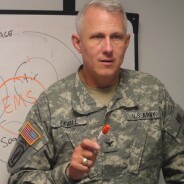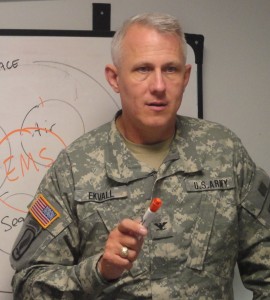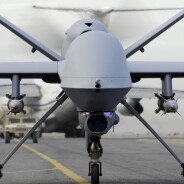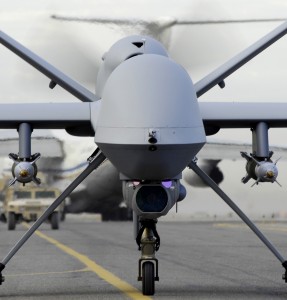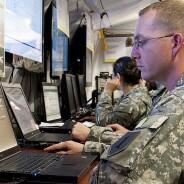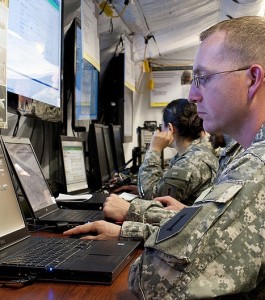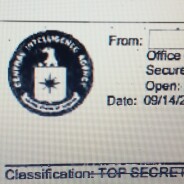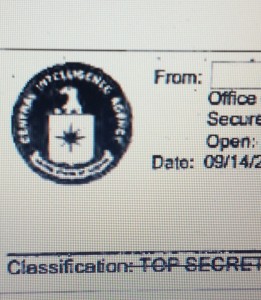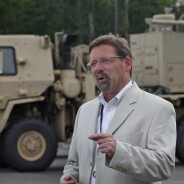News
“Massive” spike in Android malware reported
It’s not just Tibetan and Uyghur activists who need to worry about the security of their Android smartphones, though they should definitely be worried. Security firm McAfee’s threat report for the first quarter of 2013 shows a “massive increase” in new Android malware that began late last year.
More than 14,000 samples of Android malware were discovered in the first quarter of 2013 on top of the nearly 16,000 in the fourth quarter of last year. By contrast, at the end of 2011 McAfee reported only handfuls of new Android malware.
Hackers had been using apps as their main malware avenue for Androids, but McAfee says the tactics are shifting toward spam, phishing emails and SMS messages.
For the Uyghur activists who are seeking more freedom for their brethren in China, the malware arrived via a phishing email inviting users to attend the “World Uyghur Congress.” When a user clicked to register, malware began recording the user’s latitude and longitude and stealing phone contacts and call records, according to McAfee.
The malware offensive against the activists was first reported by McAfee and others in March.
McAfee is warning businesses and employees -- not just activists with Android phones -- to be cautious. Brent Conran, McAfee’s chief security officer, counseled selectivity when deciding who should be allowed to use a personally owned device for work. “Bring your own device probably isn’t a good idea for the legal department. It’s probably not a good idea for research and development. Maybe it’s a good idea for the sales force,” Conran said in a media briefing.
McAfee executives aired two schools of thought about why malware is more prominent among Android users than among iOS users.
One reason could be the large Android “footprint” around the world, which spells a potentially lucrative market for hackers who are showing more attention to returns on their investments. For example, hackers now regularly re-use malware. Another reason for the disparity could be that the Android operating system is an open platform, “whereas the Mac side of the world does some vetting of their apps,” said Phyllis Schneck, chief technology officer for McAfee’s public sector work.
Schneck suggested that iOS users shouldn’t become complacent. “Will that (disparity in malware attacks) level off? Probably,” she said.
The new report doesn’t assign attribution for the offensive against the activists or chime in about the allegations of Chinese government espionage against U.S. businesses. It examines the locations of servers without attribution.
North America -- “chiefly the United States” -- is home to the most servers hosting malware and suspicious content, according to the report.
In the Asia-Pacific region, Hong Kong has more servers hosting malicious content than does the rest of China.
More from the “McAfee Threats Report: First Quarter 2013”:
Fast success for new European Cybercrime Centre, EC3 >> “Most of the police successes we noted during the quarter involved EC3.”
Curious origin for some phishing urls >> “We were surprised this quarter to find Antarctica on this list!”
Spam’s big comeback >> “We counted 1.9 trillion messages in March. That’s lower than record levels but about twice the volume of December 2012.”
Not the piece of the pie you want >> “The United States regained the largest piece of the pie (35 percent) among countries hosting the most PDF exploits this quarter, as South Korea dropped from first place to fifth. China, with 11 percent, held onto second.”
Skyrocketing mobile malware >> “Our count of mobile malware samples, just about exclusively for the Android OS, continues to skyrocket. Almost 30 percent of all mobile malware appeared this quarter.”
Clearing the air on cyber, electronic warfare
EDITOR'S NOTE: Updated with program details
The Army’s electronic warfare experts are feeling misunderstood, and they’re worried that those misunderstandings could put them on the losing end in today’s epic budget battles. The head worrier is Army Col. Jim Ekvall, a one-time artillery man who is now chief of the Electronic Warfare Division within the Army's G-3 operations staff at the Pentagon.
>> Updates in bold italics below.
Ekvall wants to seal a place for the EW specialty in the Army’s post Afghanistan future and hitch it to the growing field of cyberwarfare. That’ll mean winning some internal battles and upgrading equipment, much of which was rushed into service in Iraq and Afghanistan to jam improvised explosive devices.
In a perfect world, Ekvall and his compatriots would give electronic warfare officers, known as EWOs or "29s" after their career field designation, a proposed software called the Electronic Warfare Planning and Management Tool. The Army plans to award a contract this month for the planning kit. The EWOs would use it to receive intel about an adversary's comms frequencies and send updates to equipment in the field.
The field equipment could include a new Raytheon-built counter-IED and intel pod that Ekvall hopes will be sent forward, presumably to Afghanistan, for operational assessment on the Army’s Gray Eagle unmanned planes. The pod is called NERO for the Networked Electronic Warfare Remotely Operated system. It can send spectrum info back to intel cells but its main purpose will be to jam frequencies used for triggering IEDs. NERO is just like the pods flown in Afghanistan on two traditionally piloted C-12 planes by Task Force CEASAR, short for Communications Electronic Attack with Surveillance and Reconnaissance.
NERO needs careful testing because the Gray Eagle is a radio controlled plane, and NERO will be jamming radio waves. "We gotta kinda make sure we don’t make the thing crash," Ekvall tells Deep Dive.
A perfect world would also mean buying a new family of Multifunction Electronic Warfare electronics known as MFEW. This is a proposed new start for 2014. A backpack version would let foot soldiers knock out an adversary’s comms or jam a specific frequency, such as one used for triggering IEDs. MFEW might replace the defensive jammers that were rushed onto vehicles in Iraq and Afghanistan, called CREW for Counter Radio-Controlled Improvised Explosive Device Electronic Warfare. The Army tells Deep Dive: "We will conduct a Joint Analysis of Alternatives in the future to determine how much DEA (defensive electronic attack) functionality can be built in and provided by MFEW vice an independent CREW system."
Then there’s EW's bid for a role in cyberwarfare. EW advocates want a place in an Army cyber center of excellence, should one be created. You can’t launch a cyber operation if you don’t control the spectrum, Ekvall says. On top of that, troops in theory could use some of the EW equipment to jump the air gap and load malware into an adversary’s network. “Could you plant a seed in that communication to cause a cyber attack? You absolutely could,” Ekvall says.
When it comes to the relationship between cyberspace and EW, Ekvall wants a bit of history to be remembered. “The realities are the Army’s interest in electronic warfare – and it’s really a re-birth of electronic warfare inside the Army – preceded its now consuming worries and concerns about cyberspace and cyberspace operations. Whereas cyberspace is still trying to figure out what it all means, electronic warfare has already kind of done that.”
Ekvall doesn’t know which parts of this vision will come to pass, and he’s not happy about that. Electronic warfare saw a resurgence in Iraq and Afghanistan, and that’s led to a misperception that EW won’t be important once the war in Afghanistan ends, Ekvall explains.
In his view, EW is not just about blocking IEDs, although he definitely sees the importance of that after riding around Iraq in vehicles equipped with jammers. “Electronic warfare is about gaining and maintaining an advantage in the electromagnetic spectrum. A piece of that would be counter IED. A piece of that would be counter comms. A piece of that is… protecting your own precision-guided munitions and your own ability to use, say, satellite communications.”
In the world according to Ekvall, the fixation on jamming is the foundation for all the misunderstandings about EW from the Pentagon to Capitol Hill.
EW’s confusing nomenclature hasn’t helped either. A case in point: The Army manages EW acquisitions within its Intelligence Electronic Warfare & Sensors office, called IEW&S. The EW equipment managed there is collectively known as IEWS, for the Integrated Electronic Warfare System.
The potential for confusion matters at the decision-making levels.
“Things that are more well understood have greater chances of success in this very resource constrained environment that we’re working in right now,” Ekvall says.
OPINION: Drones will define us, absent new policy
We witnessed President Obama the community organizer in his counter-terrorism speech at National Defense University. The president even tried to hear out the heckler, telling the audience “the voice of that woman is worth paying attention to…”
Like it or not, listening to people -- some call it leading from behind -- is Obama’s style. His speech amounted to asking the American people and their elected representatives to help “define the nature and scope of this struggle” against terrorism. We should take him up on the invitation.
The president sent out a classified guidance to various agencies spelling out the criteria for drone strikes, but one has the sense that this won't be the last word. The president wants a “comprehensive” counter terrorism strategy, lest drone strikes and prisons come to define us. He says we're at a crossroads.
It's a crossroads, but it's one produced by domestic politics more than shifting facts on the ground. We're at the same strategic crossroads now that we were last year when the president said al Qaida was "on the run," or the year before when Osama bin Laden was killed in Pakistan.
After bin Laden’s death, Obama’s former director of national intelligence, Dennis C. Blair, tried to nudge his old boss toward a new road with an op-ed in the New York Times, declaring that “unilateral drone attacks” were serving to increase “hatred of America” in Pakistan.
The headline of Blair’s piece, “Drones Alone Are Not the Answer,” could have fit atop Obama’s speech
. Partnerhips, including with countries like Pakistan, will be part of the equation, as will foreign aid.
Obama’s epiphany is late, but late is better than never. A lot of issues need to be sorted out for a truly comprehensive approach, not just for this president but for those to come.
Obama’s speech suggests a throttling back of the drone war mostly because he thinks we can – “the scale of this threat closely resembles the types of attacks we faced before 9/11” – not that we should. Drone strikes were already down to a couple dozen a year from their peak of 117 in 2010, according to the tally by the Long War Journal.
A fundamental policy question has been left answered: Was killing more than two thousand people in Pakistan and Yemen strategically worth it?
It's hard to dispute the tactical success of the drone war – the core of al Qaida is now “on the path of defeat,” as the president said yesterday.
The strategic prices have been high, however. The president doesn’t want drone strikes to define America, but in many places they already do. The terrorist threat has morphed into suspected lone wolves like the Tsarnaev brothers in Boston and the attackers in London May 22.
That's not the only strategic price. The U.S. has been derelict as steward of the new weapon it pioneered with allies like Israel – the unmanned aircraft. The drone war will make it very hard for the U.S. and its partners to criticize countries that decide armed drones are the perfect solution for every insurrection. Drones are powerful weapons that can save lives through precise targeting, but using them for targeted killings beyond war zones should be rare.
Our challenge now is to untangle the national character from the drone war, and we can’t do that without an honest reckoning.
The president's speech and guidance show no fundamental change in the administration’s thinking about the threshold for using drones, a term that was once officially non grata but which the president used more than a dozen times.
Obama broke no new ground when he promised lethal strikes against only those “who pose a continuing and imminent threat to the American people.” In February, then-CIA director nominee John O. Brennan said much the same thing to the Senate Select Committee on Intelligence. Brennan said strikes are only launched when “we believe that the intelligence base is so strong, and the nature of the threat is so grave and serious, as well as imminent, that we have no recourse.”
A huge question is still hanging out there: What does imminent mean? To me, the Webster’s definition is clear enough: “ready to take place.” It's hard to believe that all the dead were about to attack Americans.
Before Obama’s speech, the White House saw room for interpretation about the meaning of imminent, and it still does. An administration official confirmed by email that the White House stands by Brennan’s 2011 speech at Harvard Law School in which he said a more “flexible understanding of ‘imminence’ may be appropriate when dealing with terrorist groups…”
Clearly, we still have a lot to work out, and the president deserves credit for starting the conversation.
Words to the wise from CIA-bound tech guru
How was Dawn Meyerriecks planning to spend her last week on the job as the U.S. intel community’s assistant deputy director for acquisition, technology and facilities? By touring Silicon Valley with an entourage of intel officials before taking some time off and heading over to CIA on June 17, where she will be deputy science and technology director.

Dawn Meyerriecks will become deputy director of CIA's science and technology directorate in June. (Credit: ODNI)
The trip was to include a meeting with billionaire web pioneer Marc Andreessen. One of Meyerrieck's goals has been to push the intel community to make more use of commercial technology in its spy gadgetry and networks. That's been “counter cultural to the community," she said.
Meyerriecks met with reporters at the intel community's Liberty Crossing headquarters May 22. In an interesting twist, Director of National Intelligence James R. Clapper stepped into the conference room briefly to thank Meyerriecks for her three and half years at the intel headquarters.
Meyerriecks in her own words >>
Meeting Marc Andreessen >> “We’re going to talk to him and we’re also going to talk to some of the In-Q-Tel investments with the senior leadership in the community.”
Advice to big contractors >> “Help us with mission. Stop with the infrastructure stuff. You’ll be more interesting, and we’ll be more interested.”
Priorities >> "...in face of sequestration and budget reductions, the
three priorities that the leadership established, the first one was people, and you can see that in some of the recent discussions about furloughs...The second is is CT, counterterrorism, of course (A spokesman clarified later that Meyerriecks should have said cyber here). And number three, every year that I’ve been here has been preserving our R and D investment.
Tech wish list >> “New phenomenologies in terms of collection… Who’s not flying microsatellites with cameras on them, or, you know, airborne stuff with cameras on them? We draw arbitrary lines in the spectrum that say this is visible, this is IR, this is HF. Really, the spectrum doesn’t know that…We’re shooting a lot of holes in the old paradigm in terms of, you know, SIGINT versus other things.”
ICITE buy in >> “It feels like there’s an inflection point we hit, maybe a month ago, maybe six weeks ago, just in terms of the leadership getting it. That sounds like – they’re certainly not stupid -- but it feels more like a moral commitment…”
Human language translation >> "There’s lots of people that are
doing that. It turns out, though, based on some really good research – and IARPA has done
some in this space...you can inflect, based on the inflections but also the kinds of nouns and verbs that are used, who is actually the leader in a group as opposed to who is at the top of the work chart."
Technology as coping mechanism >> "I would say...we have to be more efficient with what we’ve got. The budget is not going to go up. I was with OMB this morning in the sit room and -- flat on our best day, flat is the new up, as we say. So we’re not going to hire more analysts."
Space acquisition >> "...it takes three years to get on a space manifest, and it takes six years to build a satellite. So the duty cycle on doing something innovative there compared to IT
and the investment that we get from industry – I mean, that’s like apples and oranges."
Intel tech leaders shuffle places
The Pentagon’s intelligence shop isn’t in for as much upheaval as it might seem now that long time tech manager Kevin Meiners is scheduled to head over to the U.S. intelligence community’s Liberty Crossing headquarters in June.
Meiners will be replaced by his one time deputy, Jim Martin, who’s been working at the National Reconnaissance Office.
When Meiners arrives at the Office of the Director of National Intelligence, he’ll have acquisition oversight of the intel community’s approximately $50 billion National Intelligence Program, a list of projects and technologies that includes the country’s constellations of spy satellites.
Meiners will replace Dawn Meyerriecks, the current assistant director of national intelligence for acquisition, technology and facilities. She’ll become CIA’s deputy science and technology director.
Martin’s return to the Office of the Under Secretary of Defense for Intelligence brings some continuity, but Meiners’ departure is still a big deal for the staff.
Meiners started working for the Navy in 1984 as a civilian electrical engineer, and was the first manager of the service's P-3 special projects aircraft. This month marks his 10th anniversary at the Office of the Under Secretary of Defense for Intelligence. Meiners helps oversee the $20 billion Military Intelligence Program, which includes the tactical intel fusion systems operated by the services.
“Every DoD ISR program that’s out there passed through Kevin’s hands,” one intelligence expert said.
Meiners’ deputy under secretary role used to be called “portfolio manager,” but the position was recently renamed to deputy for intelligence strategies, programs and resources.
Tired of SharePoint? Rival tool faces tests
If you’re a fan of better intel collaboration but you’re not wild about the community’s standard collaboration tool, Microsoft SharePoint, help could be on the way. A small San Francisco company called Huddle is waiting for security approvals to start pilot projects at NGA and the Department of Homeland Security with a rival service.
Huddle was founded in 2006 by a pair of British entrepreneurs. The company says its online tool is used today at the U.K.’s intelligence offices in Cheltenham, by NATO, the U.N., and the U.S. Defense Department.
Huddle’s been working on the DHS-intel community version since September, when the community’s non-profit investment partner, In-Q-Tel, decided to pour an undisclosed sum into it.
In-Q-Tel wouldn’t say how it got the idea to fund Huddle, but co-founder Alastair Mitchell said In-Q-Tel heard about the tool when Hillary Clinton found herself in a NATO-organized “Huddle” about policy in East Africa.
The State Department said it couldn’t immediately verify that account.
Huddle says the In-Q-Tel version of the technology – virtual machines running on NGA servers -- is just about ready for a series of pilot scenarios.
Huddle can’t do everything SharePoint can, like assemble and display complex decision trees for managers. But users can share documents within their team and get decisions signed-off on.
“We find that 80 percent of the users are satisfied with 20 percent of the functions” of SharePoint, said Andy McLoughlin, who founded the company with Mitchell.
Huddle’s toehold in the intel community has the makings of a David and Goliath tale.
McLoughlin and Mitchell aren’t boys, but they’re young. McLoughlin is 33 and on his third Internet startup. Mitchell is 36. Huddle has 200 employees compared to Microsoft’s 97,000.
Why would In-Q-Tel turn to a small company started by a couple young Brits who now live in San Francisco? Partly because that’s what In-Q-Tel does. It collects money from the intel agencies and spends it on young technologies. Google Earth famously started as an In-Q-Tel-funded software called Keyhole.
In this case, there was plenty of reason to look beyond SharePoint for some applications. SharePoint has a reputation for being difficult to use and it requires lots of contractors to set up and keep running. The Internet is loaded with job announcements seeking SharePoint developers with top secret/sensitive compartmented information clearances.
“You need professional administrators to make it work in a simple way,” said Neil Wasserman, an expert in collaborative technology at Timewave Analytics, a consulting firm based in Washington, D.C.
If Microsoft is Goliath, the company doesn’t seem worried about the David in its midst. The company declined to comment for this article.
McLoughlin and Mitchell met as housemates in London, and stayed in touch. Both used SharePoint in their day jobs and found it cumbersome and unattractive.
“It was over a couple drinks one night where we said surely this is a problem that could be easily fixed,” McLoughlin said.
They were inspired by a project management software called Basecamp. They decided to make a new product that would be simple like Basecamp, but have the security and enterprise management strengths of SharePoint. “That was the genesis of Huddle,” McLoughlin said.
McLoughlin and Mitchell started the company in London but moved the headquarters to San Francisco.
Mitchell talks about the company’s U.S. breakthrough with an entrepreneur’s glee:
“If you told me five years ago that we would be working with the Office of the Secretary of Defense and DoD; CIA; NGA, I would have laughed,” Mitchell said. “It’s awesome.”
Army won’t budge in fusion software debate
The spat over whether the Army should be forced to embrace Palantir's link analysis software could be moot in three or four years. By then, intel leaders hope to have transitioned away from multibillion-dollar licensing deals to online apps and secure data clouds.
In that case, it wouldn’t be up to a lawmaker or general to choose which software a military analyst should rely on to diagram the links among tribal leaders or suspected insurgents, which is what Palantir does.
The analysts would select from multiple apps vetted for security and accuracy. The software company that makes the best apps – those that get the most use -- would make the most money under a metering scheme still to be worked out.
It’s an interesting vision, but with thousands of U.S. troops still in Afghanistan and an unpredictable young leader in North Korea, the present controversy over Palantir must be dealt with.
Educating Duncan Hunter
The Army launched a PR offensive this week to try to keep Rep. Duncan Hunter (R-Calif.) and his allies in Congress from forcing the Army to incorporate Palantir into its global intel fusion toolkit, known as the Distributed Common Ground System-Army. Hunter's back and forth with Army Chief of Staff Gen. Raymond Odierno at a hearing last month went viral on the Internet.
Palantir’s fans say the company's product is more intuitive than others and that its popularity among analysts at CIA, the Marine Corps and special operations forces proves it. The Army says the problem with Palantir is that it’s built around a propriety Palantir code that makes it hard to share information.
Sure, PowerPoint visualizations can be sent around, but these are “flat files” that can’t be changed or embedded into other products, Col. Tom Miller, the intelligence chief for Army special forces, told reporters.
Lt. Gen. Mary Legere, the Army’s top intelligence officer, was emphatic that the service won’t buckle to pressure from Hunter or Palantir. She said other software suppliers “sacrificed profit and developed new models” to help solve the intelligence community’s information sharing problem, and that Palantir must do the same.
She offered business advice for the Silicon Valley company: Embrace the transition to cloud computing, apps and software standards or be left behind.
“I believe that they’re a really smart company. They’re going to make those adjustments, and we wish they’d make them now,” she said.
<< Full transcript available under "Agencies" in the Vault >>
Two of Palantir’s competitors already have link analysis tools in DCGS-A. They are Analyst’s Notebook by IBM’s i2 unit, and Axis Pro by Austin-based Overwatch, which is part of Textron Systems.
Palantir, which did not answer an email inquiry, has been trying for two years to lobby – some say bully - its way into wider use by the Army. The Army has used Palantir a little bit as a rush-to-the-field quick reaction capability. Getting it into DCGS-A would be a huge win for the company.
So far, Palantir has succeeded only in muscling its way into a cashless cooperative research and development agreement with the Army lab at Aberdeen Proving Ground, Md. Engineers haven’t been able to figure out how to make Palantir and DCGS-A play together.
“It’s not a trivial change or trivial problem that we’re trying to work through. It actually requires some fundamental adjustments to the data structure,” said Col. Charlie Wells, the service’s DCGS-A program manager.
More than link analysis
The truth is that the Army is a bit baffled by all the hubbub over link analysis. It’s critical in places like Afghanistan, but it’s not so important in a place like the Korean peninsula. Analysts use DCGS-A and its numerous software tools to glean intelligence from all kinds of collections, from signals intelligence, to drone video, to human intel reports and satellite imagery.
The feeds arrive at Humvees equipped with antennas and processing shelters. From there, the data’s sent to analysts -- typically non-commissioned officers working in high-tech tents known as tactical operations centers.
As part of its PR offensive, the Army set up a simulated TOC on the lawn just outside the Fort Belvoir, Va., headquarters of the Intelligence and Security Command, which manages DCGS-A.
Reporters were given a tour Thursday complete with a simulated intelligence production scenario. Analysts crunched simulated collections and visualized them on laptop computers and large displays. The goal was to give a commander the intel to decide whether to “remove” a character named Mohammed from the battlefield.
Lawmakers and staffs were on hand the day before, and Hunter himself was scheduled to visit Friday.
More intuitive
Palantir was a hot topic during the media day, but the Army also laid out its plans for the future of DCGS-A. The Army has started equipping deploying forces with a new operating system called Hunte, which is supposed to be more user friendly and intuitive than the current Griffin version. The software is named for an Army specialist who died in Iraq. The Army accelerated development of Hunte in response to criticism from Hunter, who has a special interest in the troops as a Marine veteran of the wars in Iraq and Afghanistan.
The Army also has two pilot projects in the works. One, called DCGS-A LITE will be a portable version of the software and computers for special operations forces. The other pilot will test a new version called DCGS-A Cloud. Analysts are scheduled to start testing the pilot version at regional theater brigades by the end of this year or early next, with fielding scheduled for late 2015 or early 2016. DCGS-Cloud is supposed to mesh seamlessly with the Intelligence Community Information Technology Enterprise, known as ICITE.
Director of National Intelligence James R. Clapper said last month that some in the community are resisting ICITE’s roll-out. It’s entered the “passive aggressive phase,” he told an audience at the C4ISR Journal conference.
The Army's message was that it's not them. Legere said over and over again that the Army is getting onboard with ICITE.
If all goes as planned, agencies will pool their apps and their data, subject to classification rules. In theory, a military analyst could choose to use an app supplied by the CIA or another agency. There'd be no need for lobbying, because the decisions would be in the hands of analysts.
EXCERPTS: Benghazi emails
The email exchanges the White House released yesterday about the drafting of the Benghazi talking points don't provide a smoking gun for anyone looking to prove that the president's protectors were determined to cover up evidence of al-Qaida involvement.
That said, some of the phrasing sounds more like circling the wagons than the transparency the White House likes to claim. Officials from CIA, the National Security Counsel and the State Department debated wording into the evening of Sept. 14, 2012, three days after the attack.
One participant recommended changes in wording to provide “insulation." State Department spokeswoman Victoria Nuland chimed in that she wanted to avoid “arming” political enemies on the Hill who might conclude that the State Department should have been prepared for an attack.
Excerpts below >>
• It all started with a coffee >>
“…at this morning HPSCI coffee with DCIA, HPSCI members eagerly sought some sort of “white paper” they could use to reply to numerous media requests asking for comments on other inflammatory press articles regarding the Benghazi attacks.” Introduction to an early draft of the talking points.
• Much of the back and forth centered on a reference to the Cairo embassy in the first bullet of the talking points, and a reference to extremists in the second bullet >>
Bullet one: “…On 10 September we warned of social media reports calling for a demonstration in front of Embassy CAIRO and that jihadists were threatening to break into the Embassy.”
Bullet two: “The crowd almost certainly was a mix of individuals from across many sectors of Libyan Society. That being said, we do know that Islamic extremists with ties to al-Qa’ida participated in the attack.”
• CIA General Counsel Stephen W. Preston chimes in >>
“Second tick says we know extremists with ties to AQ participated in attack, which implies complicity in deaths of the American officers. Do we know this?” 2:39 p.m.
Preston is still concerned an hour later >>
“Folks, I know there is a hurry to get this out, but we need to hold it long enough to ascertain whether providing it conflicts with express instructions from NSS/DOJ/FBI that, in light of the criminal investigation, we are not to generate statements with assessments as to who did this, etc. – even internally, not to mention for public release.” 3:29 p.m.
• Second bullet point is softened to include reference to ongoing investigation >>
“The crowd almost certainly was a mix of individuals from across many sectors of Libyan Society. The investigation is on-going as to who is responsible. That being said, we do know that Islamic extremists participated in the violent demonstrations.” 4:42 p.m.
• Reference to “ongoing” investigation is moved up to first sentence of second bullet >>
“The investigation is ongoing as to who is responsible for the violence, although the crowd almost certainly was a mix of individuals. We do know that Islamic extremists participated in the violent demonstrations.” 6:21 p.m.
• State Department's Victoria Nuland joins in >>
“…I have serious concerns about all the highlighted parts below, and arming members of Congress to start making assertions to the media that we ourselves are not making because we don’t want to prejudice the investigation.”
“…why do we want Hill to be fingering Ansar al Sharia, when we aren’t doing that ourselves until we have investigation results…the penultimate point could be abused by Members to beat the State Department for not paying attention to Agency warnings so why do we want to feed that either?” 7:39 p.m.
Interview: Fighting for the network
These should be happy days for Chris Marzilli. Gone are the technical headaches he inherited in 2006 when he was elevated to president of General Dynamics C4 Systems. The first Army unit equipped with his company's mobile broadband network, the second increment of Warfighter Information Network-Tactical, heads to Afghanistan this summer. Then there's the wildly behind-schedule Joint Tactical Radio System. The Pentagon broke JTRS into discrete radio programs, and among the survivors were Marzilli’s IP-protocol HMS radios – short for Handheld, Manpack, Small Form Fit.
Then came the budgetary Bermuda Triangle, as Army Chief of Staff Raymond Odierno labeled the combo of the Gates spending cuts, Congress' continuing resolutions, and sequestration. The Army will need to chip in to help pay the Pentagon's war bill, and taking funds from WIN-T is being eyed as one way to do it. Marzilli spoke by phone about his company's plan to push back, and why he thinks it's no time to stop modernizing.
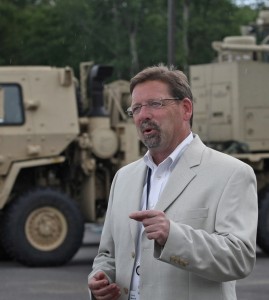
Chris Marzilli, president of General Dynamics C4 Systems, in front of a WIN-T node. (General Dynamics photo)
Excerpts >>
On the possibility of WIN-T cuts >> “The Army has stated their number one priority is network modernization…. Now it’s time to make sure that, in these difficult times, they actually resource the programs. And we’re making our case to hang in there.”
Sequestration and reprogramming >> “Things like reprogramming from the '13 budget that have already passed is a concern. Those are not directly related to sequester, but there’s bills to be paid because of sequester, so consequently they go after unobligated balances, investment type accounts.”
Why budget uncertainty hurts >> “Just on WIN-T and HMS, we have 228 sources of supply – critical sources of supply – nationwide. A dozen of those go out, and it jeopardizes the ability to actually get this stuff to the fight.”
No shame in lobbying >> “We’re educating our delegation, and we spend a lot of time and energy doing that. It’s good. It’s part of the job.”
Don’t stop modernizing now >> “The programs of record that are graduating are bringing dramatic game-changing technology, and SOF (special operations forces) will be some of the first to get that. In fact…the 10th Mountain and the 101st are the elite, SOF-type forces of the Army, and will be the first receivers and deployers for WIN-T Increment 2 and HMS.”
Big satcom project on track >> “So much attention was applied to the fact that they had a gap between the two big programs of record, the former JTRS program and the MUOS (Mobile User Objective System satellite) program, that we were set to work on filling the gaps. Now our terminals are ahead of the constellation, which is a real rarity.”
Connection to homeland >> (Army Lt. Gen. James O. Barclay) was actually testifying on the compelling need to keep the soldier’s network fresh and deployed….The Army WIN-T network is absolutely pivotal to the homeland security network and the threats to the homeland, because of its connectiveness to the National Guard.”
HMS explained >> “The radio is like a cell tower. It sits on his hip. It’s his infrastructure because there is no cell tower in the places where they typically deploy your expeditionary forces. So the HMS is the surrogate cell tower, and then the Manpack is the router, if you will, that bridges that local cell tower at the soldier radio waveform level back into that Army WIN-T network.”
Trapped in “voice land” >> “(Soldiers are) a template for the public safety folks who are still trapped in voice land, because it’s all they’ve ever known…. Most of the traffic that runs over the Army’s network is data traffic. And all of the voice is voice over IP, so even the voice is data.”
Does a smartphone threaten a radio? >>
“It’s a threat to LMR (land mobile radio) radios on U.S. soil, because again those are narrowband and limited. They’re pretty much voice instruments and instruments of the past. But it’s not a threat to an HMS radio, because again the radio isn’t a voice instrument. It’s actually a cell tower.”
FirstNet cell network vs. radios. >>
“Our role is to bridge (radios and smartphones), because they’re not going to rip and replace their LMR networks today. Those are all they have, and you don’t miraculously show up with a $20 billion FirstNet network.”
UPDATED: Big payday for Global Hawks
If the Global Hawk unmanned planes are on the rocks, one wouldn’t know it by the Pentagon’s contract announcements. Northrop Grumman is being awarded a contract worth up to $555.6 million for “Global Hawk modernization,” according to a May 13 announcement.
The work will include “engineering efforts,” “configuration management,” and “studies and analyses.” It's supposed to be done by May 14, 2015.
One thing the money won't be used for is to buy three more of the high-flying spy planes, as Congress told the Air Force to do in the 2013 National Defense Authorization Act. "I've confirmed. It's not for aircraft procurement," Air Force spokesman Ed Gulick said by email.
Air Force officials are in tense talks with congressional staff members to try to win relief from the buy-more-Global Hawks requirement. They argue that the additional planes -- Block 30 versions costing at least $100 million each -- wouldn't be delivered until 2017, three years after the Air Force finishes its congressional mandate to keep flying the Block 30s through 2014.
Congress and the Air Force have been at loggerheads since early 2012, when the Air Force did an about face and said it wanted to stop buying or flying the Block 30 versions of the Global Hawks -- the versions that were intended to be most like the piloted U-2s. Only months earlier, the Defense Department told Congress the planes were critical to national security, a requirement to keep money flowing under the Nunn-McCurdy cost control law. Congress reacted by telling the Air Force to keep flying the Block 30s through December 2014, and in fact buy more of them.
Just last month the Air Force reiterated that it wants to put its 18 Block 30 Global Hawks in storage after 2014. Aviation Week reported earlier this year that the radar-equipped Block 40 versions might be killed too.



